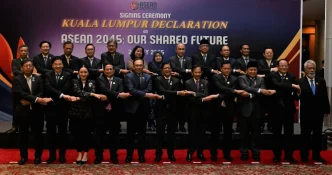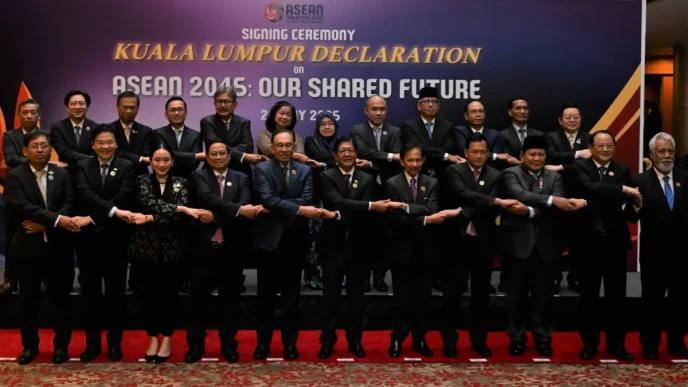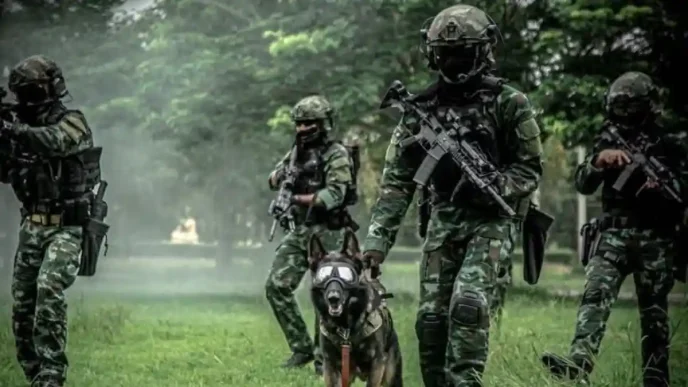In a significant step toward solidifying their shared frontier, Lao and Cambodian officials have agreed to accelerate border demarcation efforts, marking a milestone in their decades-long endeavor to define and manage their common boundary. The announcement came during the 8th Meeting of the Laos-Cambodia and Cambodia-Laos Joint Boundary Commissions, held on July 26, 2025, in Phnom Penh, where both nations reaffirmed their commitment to transforming their border into a pillar of peace and stability in the region.
Progress on Boundary Markers and Collaborative Efforts
Between June 2024 and July 2025, the two countries achieved notable progress, identifying 75 new boundary points and installing 134 permanent markers along their shared border. This brings the total number of identified points to 241, representing 47.25 percent of the entire boundary, while 207 permanent markers have been erected, accounting for 40.58 percent of the planned 510 markers. These figures, released by the Lao Ministry of Foreign Affairs, underscore the steady advancement of a process that has been ongoing for years, aimed at clarifying territorial limits and preventing disputes.
The Phnom Penh meeting served as a platform to review recent achievements and approve key decisions from prior discussions, including the minutes of the 11th meeting of the Joint Technical Boundary Sub-Commission held in Luang Prabang on April 28, 2025, and a subsequent Chairmen’s Meeting on July 25 in Phnom Penh. Led by Lao Minister of Foreign Affairs Thongsavanh Phomvihane and Cambodia’s Minister in charge of the Secretariat of State for Border Affairs Lam Chea, the delegations expressed a shared determination to expedite fieldwork. This includes replacing aging markers and installing supplementary signs to ensure the border remains clearly defined for future generations.
Historical Context and Strategic Importance
The Laos-Cambodia border, stretching over hundreds of kilometers through rugged terrain and dense forests, has long been a complex issue due to historical ambiguities dating back to colonial times under French Indochina. While both nations have maintained cordial relations since gaining independence, undefined sections of the border have occasionally led to minor tensions, particularly over resource access and cross-border movement. The joint demarcation process, initiated in the early 1990s, seeks to address these challenges by establishing a mutually recognized boundary, fostering trust, and enhancing cooperation.
The significance of this effort extends beyond mere cartography. A clearly demarcated border is essential for effective management of cross-border trade, migration, and security. For Laos, a landlocked nation reliant on regional connectivity, a stable border with Cambodia supports its broader economic ambitions, including integration into ASEAN (Association of Southeast Asian Nations) trade networks. Similarly, for Cambodia, securing its northern frontier aligns with national priorities to bolster infrastructure and tourism in border provinces such as Preah Vihear and Stung Treng, areas often overshadowed by more developed regions like Siem Reap.
Commitment to Peace and Development
During the meeting, both sides emphasized their shared vision of transforming the border into a symbol of peace, stability, and development. This aligns with the aspirations of top leaders in Vientiane and Phnom Penh, who have consistently advocated for stronger bilateral ties as a foundation for regional harmony. The delegations agreed to mark the 30th anniversary of the Laos-Cambodia Joint Boundary Survey and Demarcation, a gesture reflecting the deep-rooted neighborly ties that underpin their collaboration.
Senior officials from central and local authorities in both countries attended the discussions, highlighting the multi-level commitment to resolving outstanding issues. While specific unresolved matters were not detailed in public statements, the spirit of goodwill and mutual respect that characterized the meeting suggests a pragmatic approach to overcoming challenges. Participants expressed satisfaction with the progress made and reiterated their dedication to ensuring harmony and convenience for border communities, many of whom rely on cross-border interactions for their livelihoods.
Regional Implications of Border Demarcation
The Laos-Cambodia border demarcation effort holds broader implications for Southeast Asia, a region where territorial disputes have historically fueled conflict. While high-profile cases like the South China Sea disputes often dominate headlines, smaller-scale border issues between neighboring states can equally impact regional stability. The collaborative approach adopted by Laos and Cambodia stands as a model for peaceful resolution, demonstrating how dialogue and joint commissions can address sensitive issues without escalation.
Moreover, the successful demarcation of this border contributes to ASEAN’s vision of a cohesive and integrated community. With both nations being active members of the bloc, their efforts to manage shared frontiers reinforce the principles of mutual respect and non-interference central to ASEAN’s charter. As the region faces challenges ranging from economic disparities to climate change, such bilateral initiatives provide a foundation for tackling transnational issues collaboratively.
Challenges and Future Steps
Despite the progress, significant work remains. With over half of the boundary points yet to be identified and nearly 60 percent of planned markers still to be installed, the task ahead is daunting. The terrain along much of the border—comprising mountainous areas and remote jungles—poses logistical challenges, often delaying fieldwork. Additionally, coordinating between central authorities and local communities, who may have differing perspectives on historical boundaries, requires careful diplomacy to avoid misunderstandings.
Both delegations acknowledged these hurdles and committed to accelerating the pace of their efforts. The focus on replacing aging markers is particularly critical, as deteriorating infrastructure can lead to confusion and disputes over time. Supplementary signs, meanwhile, will aid in making the border more visible and accessible to residents and officials alike, reducing the likelihood of unintentional crossings or conflicts.
Impact on Border Communities
For communities living along the Laos-Cambodia border, the demarcation process is more than a bureaucratic exercise—it directly affects their daily lives. Many of these communities, often ethnic minorities with deep cultural ties across the border, depend on informal trade and family connections that transcend national lines. A clearly defined and well-managed border can facilitate legal cross-border movement, ensuring access to markets and services while reducing the risk of misunderstandings with authorities.
At the same time, the process must be inclusive to avoid alienating local populations. Historical grievances or perceptions of land loss can create friction if not addressed transparently. Both governments have a vested interest in engaging with these communities, ensuring that the demarcation process is seen as a step toward shared prosperity rather than division. Initiatives to improve infrastructure, such as roads and checkpoints, could further enhance the benefits of a stable border, turning remote areas into hubs of economic activity.
Looking Ahead: A Border of Opportunity
As Laos and Cambodia move forward with their demarcation efforts, the potential for their shared border to become a conduit for regional integration grows. Beyond the immediate goal of clarifying territorial lines, the process symbolizes a broader commitment to peace and cooperation in a region with a complex history of conflict and reconciliation. The goodwill displayed at the Phnom Penh meeting, coupled with tangible progress on the ground, offers hope that the remaining challenges can be met with the same spirit of partnership.
The coming years will test the resolve of both nations to complete this ambitious project. Yet, with each boundary point identified and each marker installed, Laos and Cambodia are not just drawing a line on a map—they are building a foundation for lasting stability. As their leaders envision, this border could one day stand as a testament to the power of collaboration, benefiting not only their citizens but the entire Southeast Asian region. How this shared frontier evolves will be a key indicator of the strength of their partnership and their role in shaping a more connected ASEAN.
















